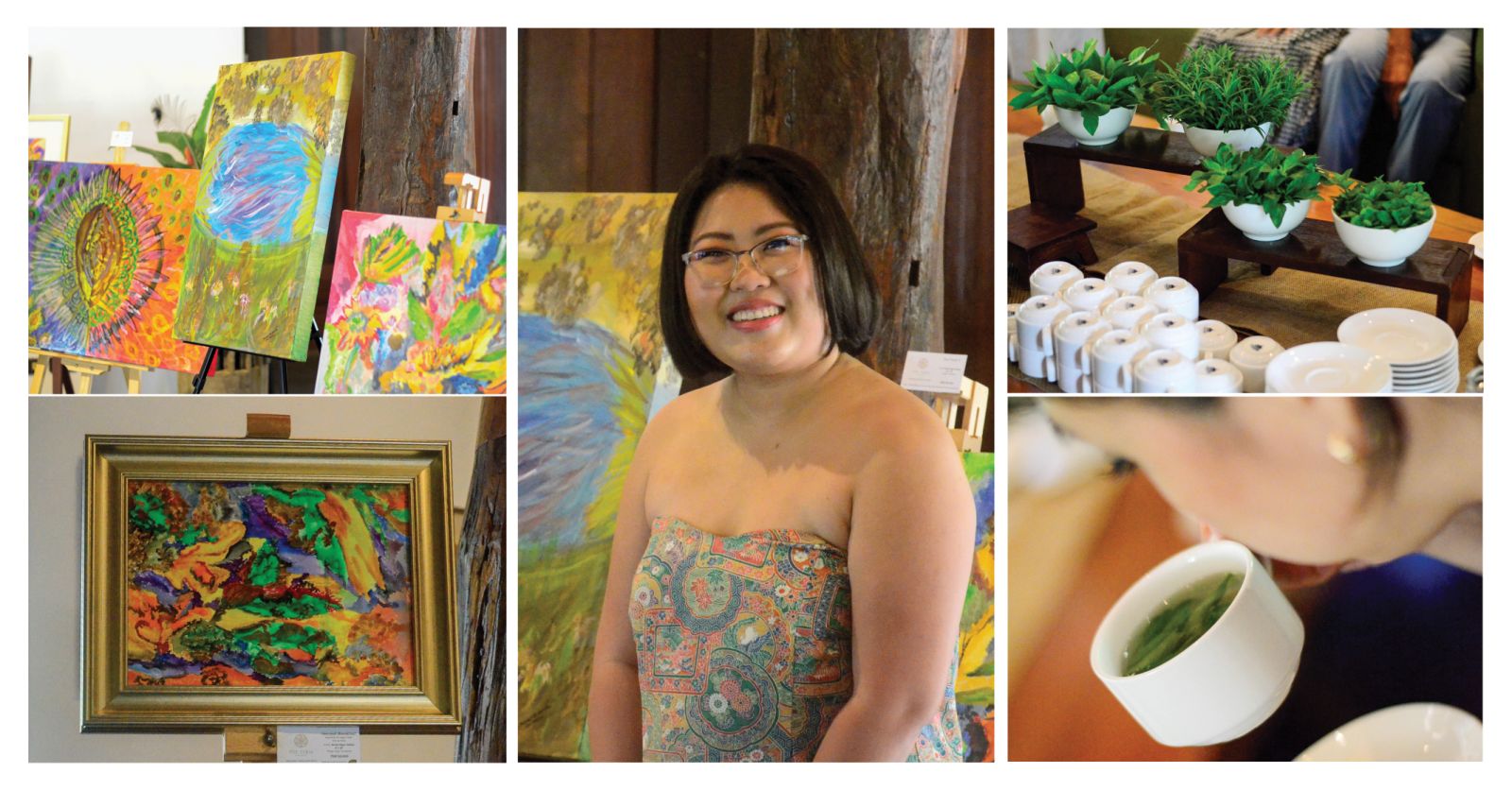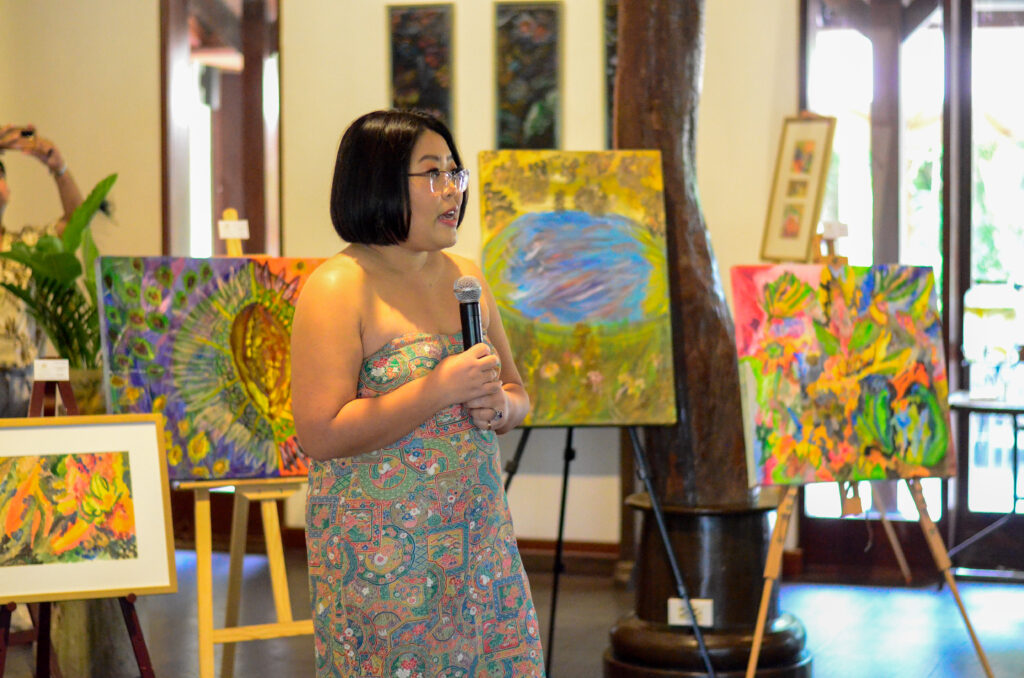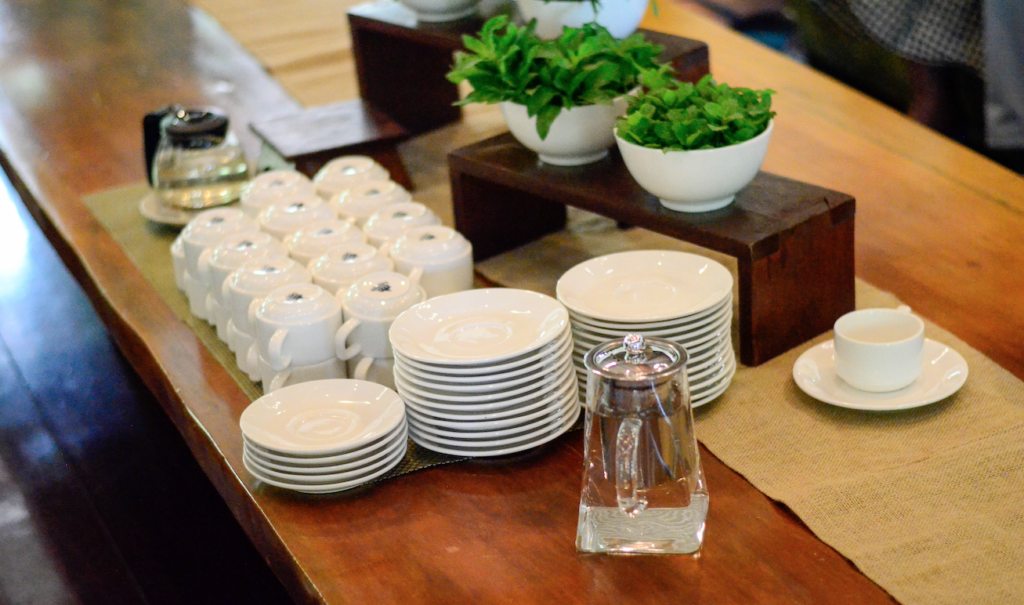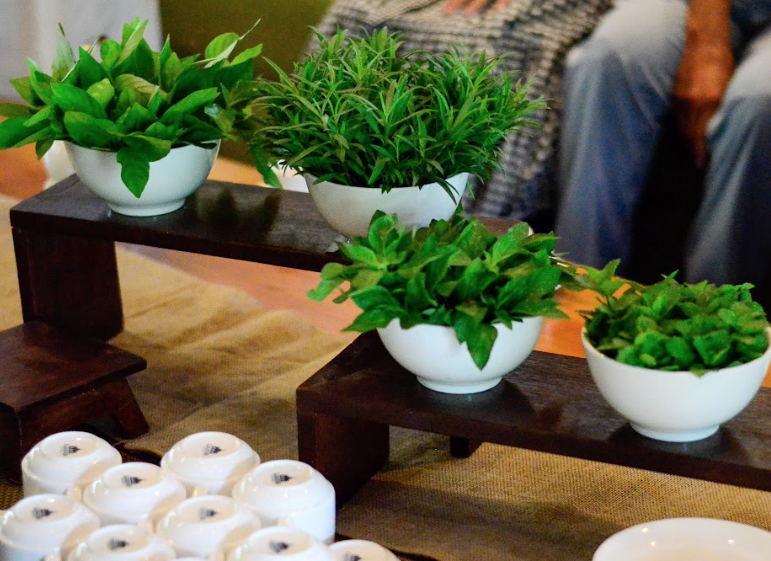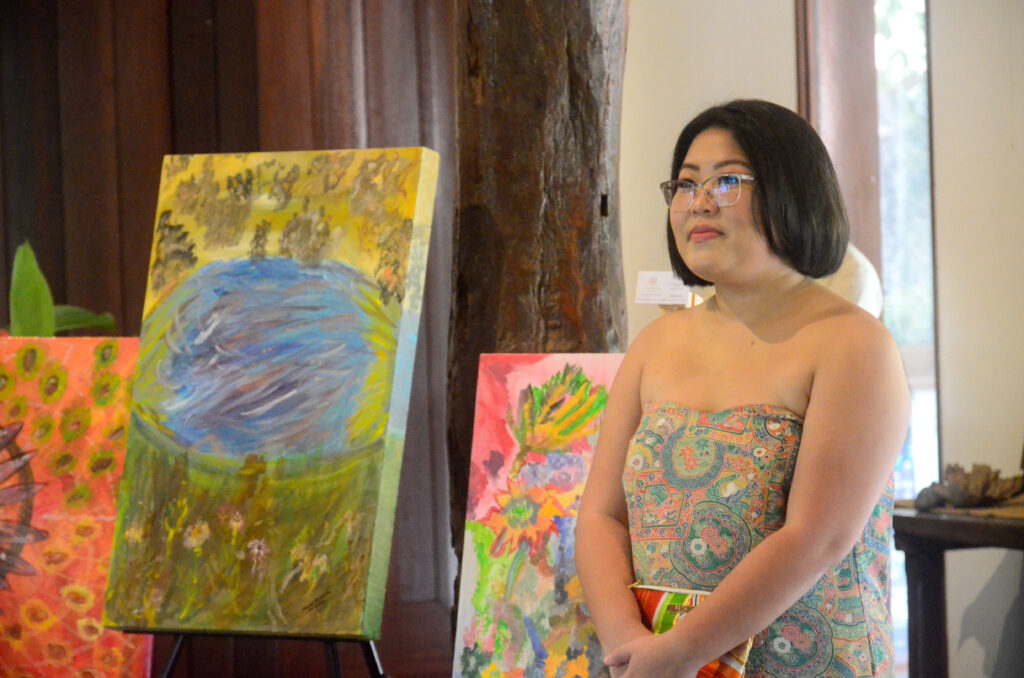For tea sommelier and painter Rachel Ngan Dueñas, pain is a catalyst for artistic creativity. The up-and-coming visual artist unleashes her creative stroke of genius and shows the transformative power of healing art in her first solo exhibit Healing With the Arts – Embrace the Healing Power of the Arts, at The Farm at San Benito in Lipa, Batangas.
by Kenn Anthony Mendoza
When painter Rachel Ngan Dueñas stepped out into the lobby of The Farm at San Benito where her first solo exhibit Healing With the Arts — Embrace the Healing Power of the Arts was being staged, she greeted everyone with open arms, entertaining guests and flitting from corner to corner.
She then introduced her paintings with the zeal and wonder of a 10-year-old kid, who was poised to show her A+ report card to her parents. Wearing a tube dress by Japanese-Philippine label Edya1929, she blended seamlessly with her artworks. Her presence gave the impression she’s an artist to look out for.
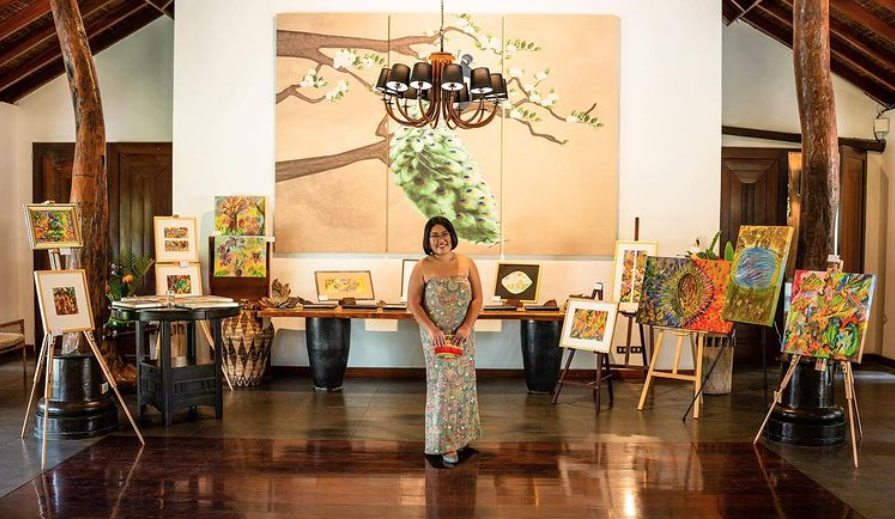
But don’t let the contagious energy and her jovial and cheerful disposition deceive you. She has the uncanny ability to channel pain and negative energy and turn them into what she calls “transformative healing works of art.”
Pain & sensibility
During a roundtable discussion with the media, Dueñas admitted that she had no formal art education. Prior to being an artist, she worked as a tea meditation teacher and a tea sommelier. She completed her training and got her certification from the International Tea Masters Association.
“Being a tea sommelier requires a heightened sense of smell and taste to distinguish, say, which country the tea came from. I observed tea judges and monks in China how they prepare their tea. From there, I was able to articulate those practices for ordinary people,” Dueñas recalled.
Dueñas’s foray into art was through her mother-in-law, who explained to her the tools of the trade and taught her the technicalities of painting. When she asked for advice, her mother-in-law replied vaguely, “just paint!”
“I made ugly paintings in 2019. My relatives would bash me. The only one who would praise my work was my nephew — and he was my favorite!” Dueñas said with a laugh.
She also visited art galleries, feeling bashful and intimidated. She said she didn’t feel “talented” and did not have a specific influence.
“The art world was mystical to me. I was like a little girl peeking through the table of grown-up artists,” she said.
She then started to teach tea meditation as a means of relieving lockdown-induced stress when the pandemic struck in 2020. Unintentionally, she absorbed the negative emotions shared with her by other people during such sessions. That was when her technique started to progress.
“With what happened,” Dueñas said, referring to the sessions, “I can say there was a divine influence that affected my process because it was a prayer. Even I get surprised after painting.”
Comparing pain to a flower
Dueñas’s artistry resembles the style of impressionists and modernists Paul Gauguin, Claude Monet and Henri Matisse. Locally, the “sweetness” and “smoothness” of her strokes are compared to Filipino contemporary painter Tam Austria and the late Spanish painter Betsy Westendorp.
Most of Dueñas’s artworks — on oil, acrylic and watercolor — are populated by flowers, which, she said, represent pain. Flowers, when closed, look ordinary to the naked eye and often go unnoticed. “Before a flower can blossom, it has to endure pain,” she related.
How she paints
For Dueñas, the key skill in abstract art is the “ability to play.”
“Abstract has no set rules. You need to accept mistakes so your work will form a better picture. A lot of people expect artists to just copy what’s in front of them, but in abstract, there’s more outlet for creativity and you can express yourself in different ways,” she said.
One of her favorite pieces in her exhibit is When the World Says Yes, an 18 x 24 oil on canvas. Dueñas wrote on her Instagram account that she felt hopeful and optimistic when she painted the piece. She dedicated it to her younger self.
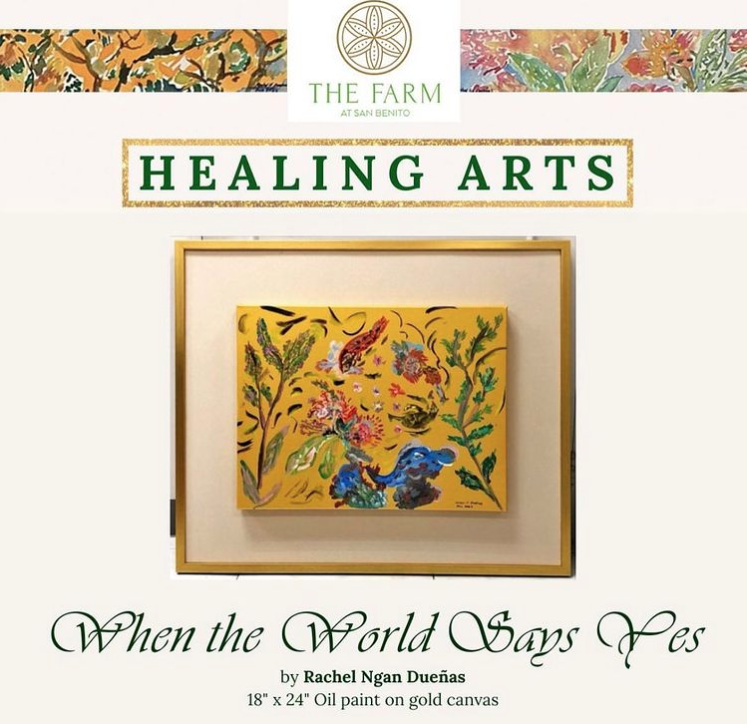
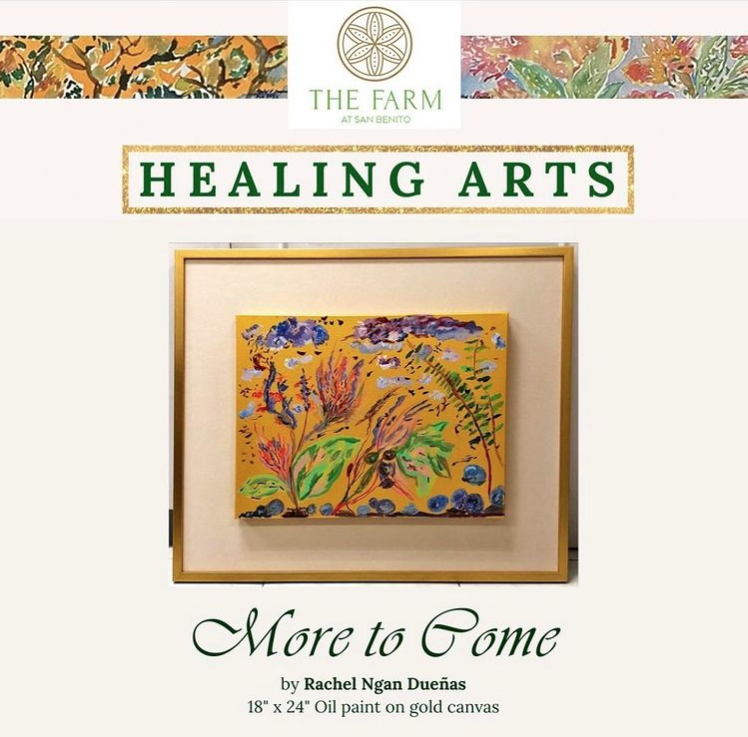
Another is More to Come, an 18 x 24 oil on gold canvas. When she painted it, she was laughing the whole time, Dueñas recalled. She described it as “multiplying of talents, blessings and opportunities.”
In the lens of a young artist
As a promising artist, does Dueñas find the Philippine art scene intimidating? For her, the art scene depends on what movement you belong to. The art scene is “cliquish” because every artist needs a tribe, she said.
“If you meet like-minded people who possess the same values, then these people will be nurturing. Being with them will spur conversations beyond art.”
Dueñas is ready for her next move. She is poised to hold another exhibit at Galerya Amalia in Parañaque on October 7, under the guidance of acclaimed art critic Cid Reyes.
At the end of the interview, I ask Dueñas where she sees herself five years from now and where her artistic trajectory will take her. She felt certain of what is to come.
“I want to exhibit internationally,” she declared with the conviction that it will happen soon. She answers with satisfaction and an understated confidence in her voice: “I’ve found my calling. Decades from now, I will still paint and teach tea meditation. I’m already doing what I love.”
Rachel Ngan Dueñas’s exhibit is on display at The Farm at San Benito until June 30. For more information, follow the artist @rachelnduenas on Instagram.

